Don't wanna be here? Send us removal request.
Text
Exploring the Best Platforms to Find Exceptional Graphic Designers
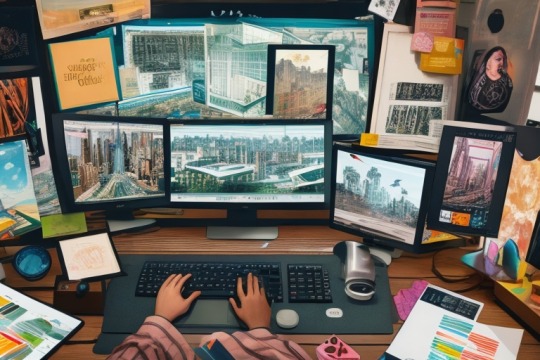
Introduction:
In today's digital age, finding skilled graphic designers is essential for businesses and individuals alike. Whether you're a startup looking to establish your brand identity or an established corporation in need of fresh design perspectives, the quest for talented graphic designers is paramount. However, with the plethora of options available, determining the best platform to find good graphic designers can be daunting. This article aims to explore various avenues and assess their suitability in connecting with top-notch graphic design talent.
Click Here For More Information
1. Freelance Platforms:
Freelance platforms like Upwork, Freelancer, and Fiverr have gained significant popularity in recent years. These platforms offer access to a diverse pool of freelance graphic designers with varying skill levels and expertise. Clients can post projects, review portfolios, and choose designers based on their qualifications and past work. While freelance platforms provide flexibility and cost-effectiveness, finding the right designer amidst the sea of applicants can be time-consuming. Moreover, quality assurance may be a concern, as the lack of stringent screening processes can result in inconsistent outcomes.
2. Design Communities and Forums:
Online design communities and forums such as Dribbble, Behance, and Reddit's r/DesignJobs serve as hubs for creative professionals to showcase their portfolios and connect with potential clients. These platforms offer a wealth of talent, allowing clients to browse through a diverse range of styles and aesthetics. Engaging with the community also provides opportunities for networking and collaboration. However, the abundance of talent can be overwhelming, making it challenging to narrow down the search. Additionally, while these platforms showcase designers' work, they may not always facilitate direct hiring processes, requiring additional communication and negotiation.
3. Specialized Design Agencies:
Specialized design agencies focus solely on providing graphic design services to clients across various industries. Unlike freelance platforms where designers work independently, agencies employ teams of designers with diverse skill sets and expertise. Working with a design agency offers several advantages, including access to a curated pool of talent, streamlined project management processes, and professional oversight. Agencies often have established workflows and quality control measures in place, ensuring consistent and high-quality deliverables. However, the premium nature of agency services may come with higher costs compared to freelance platforms.
4. Social Media Platforms:
Social media platforms such as LinkedIn, Twitter, and Instagram serve as valuable tools for discovering and engaging with graphic designers. Designers frequently share their work on these platforms, allowing clients to gain insights into their creative process and style. Direct messaging and networking features enable clients to reach out to designers directly, facilitating personalized communication and collaboration. However, the informal nature of social media platforms may lack the professionalism and project management capabilities offered by other avenues. Moreover, sifting through the vast volume of content can be time-consuming, requiring careful curation to find suitable candidates.
5. Design Schools and Alumni Networks:
Design schools and alumni networks provide access to emerging talent and recent graduates eager to establish themselves in the industry. Collaborating with design students offers a unique opportunity to tap into fresh perspectives and innovative ideas. Many design schools have career services departments that facilitate connections between students and potential employers. While working with students may entail some degree of risk due to their limited experience, it can also be rewarding in terms of cost-effectiveness and fostering long-term relationships.
Click Here For More Information
Conclusion:
In conclusion, the search for good graphic designers encompasses a myriad of options, each with its own set of advantages and considerations. Freelance platforms offer flexibility and scalability but may lack consistency and quality control. Design communities and forums provide access to diverse talent pools but require careful vetting and communication. Specialized design agencies offer professionalism and expertise but at a premium cost. Social media platforms facilitate direct engagement but may lack formal project management capabilities. Finally, design schools and alumni networks present opportunities to nurture emerging talent but require careful mentorship and supervision. Ultimately, the best platform to find good graphic designers depends on the specific needs and preferences of the client, balancing factors such as budget, quality, and project requirements. By exploring and evaluating these avenues, clients can make informed decisions and forge successful partnerships with talented graphic designers.
#adobe photoshop#digital design#mockup#creative logo#typography#abstract#poster design#canva#business logo#motion design
0 notes
Text
t shirt design
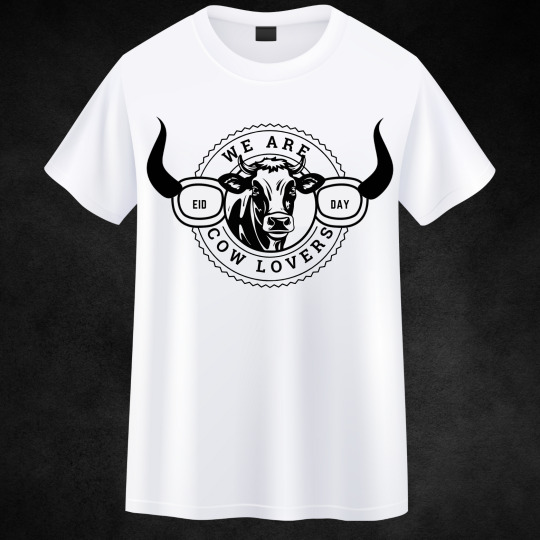
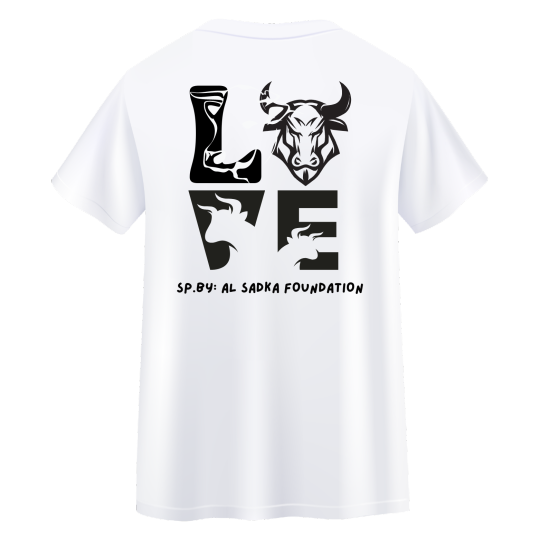

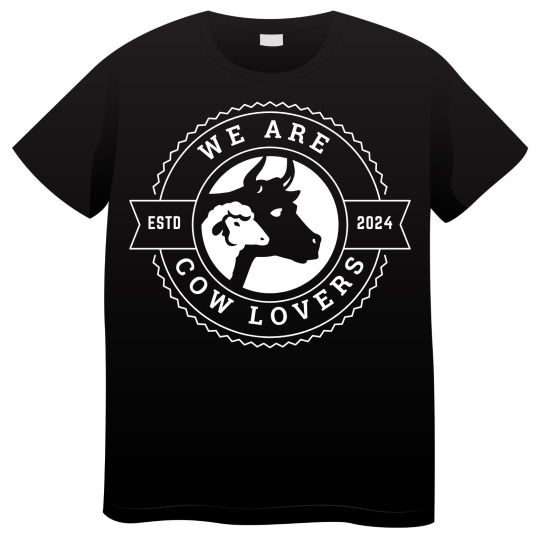
I'm a skilled graphic designer,I do a lot of designing on Presentation, branded social media posts, Posters, banners, birthday cards, flyer and Others click here hashtag#vector hashtag#brandidentity hashtag#logos hashtag#posterdesign hashtag#love hashtag#socialmedia hashtag#business hashtag#instagram hashtag#poster hashtag#advertising hashtag#artistsoninstagram hashtag#graphicart hashtag#sketch hashtag#logotype hashtag#instagood hashtag#print hashtag#socialmediamarketing hashtag#digital hashtag#smallbusiness hashtag#adobeillustrator hashtag#fashion hashtag#instaart hashtag#bhfyp hashtag#music hashtag#artoftheday hashtag#painting hashtag#follow hashtag#logomaker hashtag#digitalillustration hashtag#vectorart
#business logo#adobe photoshop#canva#digital design#motion design#typography#abstract#mockup#poster design#creative logo
2 notes
·
View notes
Text
Upwork vs. Fiverr: An In-Depth Comparison
In the world of freelancing, two platforms stand out as giants: Upwork and Fiverr. Both platforms have revolutionized the way people work, offering opportunities for freelancers and businesses alike. However, when it comes to choosing between the two, many freelancers find themselves at a crossroads. In this blog post, we'll delve into an in-depth comparison of Upwork and Fiverr, exploring their differences, similarities, and which might be the better fit for your freelancing needs.
Click Here for Best Designer
### Introduction to Upwork and Fiverr
Upwork and Fiverr are both online platforms that connect freelancers with clients seeking various services. Each platform has its own unique features and target audience.
**Upwork**: Formerly known as Elance-oDesk, Upwork is one of the largest freelancing platforms globally, boasting millions of users. It offers a wide range of services, including web development, graphic design, writing, marketing, and more. Upwork operates on a bidding system, where freelancers submit proposals for projects posted by clients. Clients review proposals and select the freelancer they believe is the best fit for the job.
**Fiverr**: Fiverr is known for its user-friendly interface and straightforward approach. Unlike Upwork, where freelancers bid on projects, Fiverr freelancers create gigs outlining their services, turnaround times, and pricing. Clients browse through these gigs and directly hire freelancers whose offerings align with their needs. Fiverr initially gained popularity for its $5 services (hence the name), but it has since evolved to offer a wide range of pricing options.
### Pricing Structure
One of the most significant differences between Upwork and Fiverr lies in their pricing structures.
**Upwork**: Upwork charges freelancers a service fee based on the total amount billed to the client. The fee starts at 20% for the first $500 billed with a specific client, then reduces to 10% for earnings between $500.01 and $10,000, and further decreases to 5% for earnings above $10,000 with the same client.
**Fiverr**: Fiverr operates on a commission-based model as well but with a fixed fee of 20% on all transactions. Additionally, Fiverr also charges buyers a processing fee of $2 for purchases up to $40 and 5% for purchases above $40.
While both platforms take a percentage of earnings, the fee structure on Upwork can be more favorable for high-earning freelancers who establish long-term relationships with clients.
### Quality of Work and Talent Pool
The quality of work and talent pool on Upwork and Fiverr can vary significantly due to their different approaches to vetting freelancers.
**Upwork**: Upwork employs a rigorous vetting process, requiring freelancers to submit applications and undergo skill assessments in their chosen fields. This process aims to ensure that only skilled professionals are accepted onto the platform. Additionally, Upwork allows clients to leave feedback and reviews, which can help prospective clients gauge a freelancer's reliability and expertise.
**Fiverr**: Fiverr has a less stringent vetting process, allowing anyone to create a seller account and offer services. While this approach provides more opportunities for aspiring freelancers, it can also result in a wider variance in quality. However, Fiverr offers a rating system and user reviews to help clients make informed decisions when hiring freelancers.
### Flexibility and Job Opportunities
Both Upwork and Fiverr offer freelancers flexibility in terms of when and where they work. However, the types of job opportunities available on each platform may differ.
**Upwork**: Upwork caters to a wide range of industries and job categories, from software development and graphic design to virtual assistance and translation services. Freelancers can find both short-term and long-term projects on Upwork, ranging from hourly gigs to fixed-price contracts.
**Fiverr**: Fiverr's gig-based model offers freelancers the opportunity to showcase their specific skills and expertise. While Fiverr does cover a broad spectrum of services, including writing, design, programming, and marketing, freelancers typically create gigs for specific tasks or deliverables. This structure can be advantageous for freelancers who excel in niche areas or prefer to work on individual projects.
### Community and Support
Building a supportive community can be crucial for freelancers, especially those who are just starting their freelance careers.
**Upwork**: Upwork provides a range of resources and support for freelancers, including forums, webinars, and educational materials. Freelancers can connect with peers, seek advice, and stay updated on industry trends through the Upwork community. Additionally, Upwork offers customer support to assist freelancers with any issues they encounter on the platform.
**Fiverr**: Fiverr also offers community forums and educational resources to help freelancers succeed on the platform. However, some freelancers find the community aspect of Fiverr to be less robust compared to Upwork. Fiverr's customer support is available to assist with platform-related inquiries, but response times may vary.
### Conclusion
In conclusion, both Upwork and Fiverr offer unique opportunities for freelancers to showcase their skills and connect with clients worldwide. The choice between the two platforms ultimately depends on your individual preferences, skillset, and career goals.
If you prefer a platform with a rigorous vetting process, a diverse range of job opportunities, and a supportive community, Upwork may be the better choice for you. However, if you excel in a specific niche and prefer a straightforward gig-based model, Fiverr could be the perfect platform to showcase your talents.
Regardless of which platform you choose, success as a freelancer requires dedication, professionalism, and a commitment to delivering high-quality work. By leveraging the strengths of Upwork or Fiverr and actively engaging with clients and the freelance community, you can build a thriving freelance career and achieve your goals.
#business logo#typography#canva#digital design#poster design#motion design#adobe photoshop#mockup#creative logo#abstract
1 note
·
View note
Text
Exploring Graphic Design Trends of 2024: A Vision of Creativity and Innovation
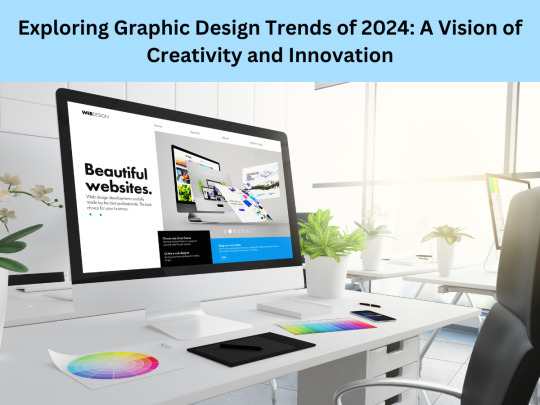
Introduction: In the ever-evolving realm of graphic design, trends serve as guiding lights, illuminating the path toward creativity and innovation. As we delve into 2024, the landscape of graphic design continues to shift, influenced by technological advancements, societal changes, and artistic experimentation. This essay aims to dissect and explore the prevailing graphic design trends of 2024, showcasing the fusion of tradition and innovation that defines this era.
click here for designer
Sustainable Design: Sustainability has emerged as a cornerstone of modern design philosophy. In 2024, graphic designers are increasingly embracing eco-friendly practices, opting for recyclable materials, minimalistic designs, and energy-efficient processes. From utilizing sustainable fonts to incorporating environmentally conscious color palettes, designers are weaving sustainability into the very fabric of their creations.
Augmented Reality (AR) Integration: The integration of augmented reality into graphic design has unlocked a realm of interactive possibilities. In 2024, designers are leveraging AR to blur the lines between the digital and physical worlds, creating immersive experiences for users. From interactive packaging designs that come to life through smartphone apps to AR-enhanced advertising campaigns, this trend adds an extra dimension to graphic design, captivating audiences in new and innovative ways.
Neomorphism: Neomorphism, a design trend characterized by soft shadows and subtle highlights, continues to gain traction in 2024. This minimalist approach to UI design creates a sense of depth and realism, reminiscent of physical objects. Graphic designers are employing neomorphic elements in user interfaces, logos, and branding materials, infusing designs with a sleek and modern aesthetic that captivates the eye.
Nostalgic Revival: In a world marked by rapid technological advancement, there's a growing yearning for the nostalgia of yesteryears. Graphic designers are tapping into this sentiment by incorporating retro elements into their work. From vintage-inspired typography to retro color schemes, this trend pays homage to the design styles of decades past while infusing them with a contemporary twist, creating a sense of familiarity and comfort for audiences.
Motion Graphics: With the proliferation of video content across digital platforms, motion graphics have become an integral part of graphic design in 2024. Designers are harnessing the power of animation to bring their creations to life, captivating viewers with dynamic visuals and engaging storytelling. Whether it's animated logos, explainer videos, or social media content, motion graphics add a layer of depth and interactivity to graphic design, making it more accessible and compelling.
Data Visualization: As data continues to proliferate in the digital age, the ability to effectively communicate information through visual means has never been more critical. Graphic designers in 2024 are tasked with transforming complex data sets into clear and compelling visuals that resonate with audiences. Through infographics, charts, and interactive dashboards, designers are simplifying complex information, enabling viewers to grasp key insights at a glance.
Cultural Diversity and Inclusivity: In an increasingly diverse and interconnected world, graphic designers are embracing cultural diversity and inclusivity in their work. From representation in imagery and typography to the use of inclusive language, designers are striving to create designs that resonate with people from all walks of life. This trend not only reflects the evolving demographics of society but also promotes empathy, understanding, and unity through design.
Abstract and Organic Shapes: In contrast to the rigid geometric forms of the past, graphic designers in 2024 are embracing abstract and organic shapes to add visual interest and dynamism to their creations. From fluid lines and asymmetric compositions to organic patterns inspired by nature, this trend celebrates the beauty of imperfection and spontaneity, infusing designs with a sense of energy and vitality.
Conclusion: As we journey through 2024, the landscape of graphic design is characterized by a harmonious blend of tradition and innovation. From sustainable practices and augmented reality integration to nostalgic revivals and cultural inclusivity, designers are pushing the boundaries of creativity while staying rooted in timeless principles. By embracing these trends, graphic designers are not only shaping the visual aesthetics of our era but also forging deeper connections with audiences across the globe. As we look to the future, one thing is certain: the evolution of graphic design will continue to be a testament to the endless possibilities of human imagination and ingenuity.
#business logo#typography#poster design#digital design#adobe photoshop#mockup#creative logo#motion design#canva
0 notes
Text
Exploring the Essence of Graphic Design: A Journey into Visual Communication

Exploring the Dynamic World of Graphic Design: A Comprehensive Overview
Introduction:
Graphic design is a multifaceted discipline that intertwines creativity, technology, and communication to visually convey messages, evoke emotions, and inspire action. In this comprehensive exploration, we delve into the intricacies of graphic design, tracing its historical roots, examining its fundamental principles, and elucidating its evolving role in contemporary society.
Historical Evolution:
The history of graphic design dates back to ancient civilizations, where visual symbols and imagery were used to communicate ideas and concepts. From Egyptian hieroglyphics to illuminated manuscripts of the Middle Ages, graphic design has played a pivotal role in human communication throughout the ages. The advent of the printing press in the 15th century revolutionized the field, allowing for mass production of printed materials and the proliferation of typography and layout techniques.
The Industrial Revolution further propelled the evolution of graphic design, with advancements in printing technology enabling the creation of posters, advertisements, and packaging designs. The early 20th century witnessed the emergence of influential movements such as Art Nouveau, Bauhaus, and Art Deco, which shaped the aesthetic principles and design philosophies of the era.
Fundamental Principles:
At its core, graphic design is governed by a set of fundamental principles that guide the creation of visually harmonious and effective compositions. These principles include:
Composition: The arrangement of visual elements within a design space to achieve balance, unity, and hierarchy.
Typography: The art and technique of selecting and arranging typefaces to enhance readability, convey tone, and evoke emotion.
Color Theory: The study of color interactions and psychological effects, informing the use of color palettes to evoke specific moods and convey meaning.
Contrast: The juxtaposition of elements with differing visual properties to create emphasis, depth, and visual interest.
Balance: The distribution of visual weight within a composition to create stability and harmony.
Hierarchy: The organization of elements to guide the viewer's attention and convey the relative importance of information.
Gestalt Principles: The theory of perceptual organization, which explores how the human mind perceives and interprets visual stimuli, influencing the arrangement of elements in design.
Applications and Disciplines:
Graphic design encompasses a wide array of applications and disciplines, ranging from print media to digital platforms. Some of the key areas of graphic design include:
Branding and Identity: Creating cohesive visual identities that reflect the personality, values, and aspirations of organizations and brands.
Advertising and Marketing: Developing compelling campaigns and collateral materials that effectively communicate messages and engage target audiences.
Editorial Design: Designing layouts for books, magazines, newspapers, and other publications, balancing text and imagery to enhance readability and visual appeal.
Web and User Interface Design: Crafting intuitive and visually engaging interfaces for websites, mobile apps, and digital platforms, prioritizing user experience and accessibility.
Motion Graphics and Animation: Integrating dynamic visuals, typography, and effects to create engaging motion graphics, videos, and interactive experiences.
Environmental and Exhibition Design: Conceptualizing immersive spatial experiences, signage, and installations that enhance brand presence and engage audiences in physical environments.
Technological Advancements:
The advent of digital technology has revolutionized the practice of graphic design, empowering designers with powerful tools and techniques for creating and manipulating visual content. Graphic design software such as Adobe Photoshop, Illustrator, and InDesign have become indispensable tools for designers, offering unparalleled flexibility and precision in design execution.
Furthermore, advancements in digital printing, 3D rendering, and augmented reality have expanded the possibilities of graphic design, enabling designers to explore new mediums and push the boundaries of visual storytelling. The rise of online platforms and social media has also transformed the landscape of graphic design, providing designers with global reach and unprecedented opportunities for collaboration and exposure.
Challenges and Opportunities:
Despite its ubiquity and relevance in modern society, graphic design faces a myriad of challenges in an increasingly digital and interconnected world. The democratization of design tools and the proliferation of online marketplaces have led to commoditization and downward pressure on pricing, challenging the sustainability of professional practice.
Moreover, the rapid pace of technological innovation and evolving consumer preferences necessitate constant adaptation and upskilling for designers to remain competitive in the field. However, these challenges also present opportunities for innovation, collaboration, and diversification, as designers explore new niches, embrace emerging technologies, and champion ethical and sustainable design practices.
Conclusion:
In conclusion, graphic design is a dynamic and ever-evolving discipline that encompasses artistry, technology, and communication. From its humble origins in ancient civilizations to its pivotal role in shaping contemporary culture and commerce, graphic design continues to inspire, inform, and challenge our perceptions of the world around us.
As we embark on this journey through the world of graphic design, we celebrate the creativity, innovation, and passion that define this vibrant field, while acknowledging the profound impact it has on our lives and our collective imagination. As designers, creators, and storytellers, we have the power to shape narratives, ignite emotions, and transform ideas into reality through the art of graphic design.
2 notes
·
View notes